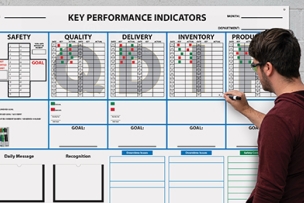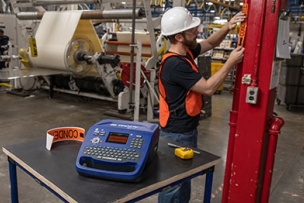As Honeywell notes in a recent report on AMRs, “innovations in vision, mapping, safety and other technologies developed for self-driving vehicles” have enabled AMRs to “share the road” with human co-workers and other vehicles and “respond to rapid changes in orders or logistics needs—all without human intervention.”
It’s worth noting that most companies have traditionally used forklifts to move heavy loads, and that qualified drivers require training and certification—qualifications that can be hard to find in today’s labor market. Forklifts are also a leading cause of warehouse injuries, leading to 79 work-related deaths and 8,140 nonfatal injuries involving days away from work in 2019, according to the National Safety Council.
Here’s how automation is helping to reduce workplace injury risks for humans:
No. 1: Lifting and Transporting Materials
Physical overexertion is the most costly cause of workplace injuries nationwide, according to the 2020 Liberty Mutual Workplace Safety Index, which tallies the leading causes of the most serious workplace accidents that mean an employee misses more than five days from work. These injuries cost employers $13.98 billion each year, according to the report.
Automated robotic platforms are helping to alleviate the problem. While employees would previously have been required to lift a heavy item and push a cart around a manufacturing facility, mobile robots can now take on the most labor-intensive jobs ranging from moving pallets or carts full of goods to assisting human co-workers with repetitive and time-consuming tasks, such as pick-and-place operations.
Take, for example, the new “Stretch” robot from Boston Dynamics, which was designed to move boxes in warehouses. The robot can reportedly move up to 800 cases an hour, which is a work rate that’s comparable to that of a human employee.
These kinds of robotics are set to handle myriad material handling tasks in facilities delivering multiple benefits, such as allowing companies to shift scarce and costly labor resources to higher-value jobs, improving worker satisfaction and fatigue, and reducing injuries and turnover rates.
No. 2: Technologies That Improve Ergonomics
Occupational injuries and illnesses resulting in musculoskeletal disorders, or MSDs, are costly. They occur when the body uses muscles, tendons and ligaments to perform tasks, often in awkward positions, or perform frequent activities that over time can create pain and injury, according to the U.S. Bureau of Labor Statistics.
Properly designed and configured workstations can help prevent these injuries, which are primarily caused by overexertion and repetitive motions.
Smart workstation setups, configured to reduce waste and improve efficiency, provide employees with a relaxed working position where work movements follow the body’s natural movements.
Automation helps, too. Cobots, or collaborative robots, work alongside humans to take on repetitive and physically demanding tasks at workstations to give people enough rest, boosting the safety of workers. These robots make worker fatigue less problematic because robots can perform tasks for long periods without breaks, and their performance doesn’t decline because of fatigue.
Research shows that people are most at risk of occupational accidents and injuries when they don’t take breaks often enough, or when the breaks are too short.
A smart workstation may also include an adjustable table for upward, downward and angular positions, or a chair with arm and back support. Storage bins and tools are located nearby for quick and easy access, helping to keep clutter to a minimum and improving a worker’s ability to organize parts around a workstation.
No. 3: Maintaining Safe Workplaces
Traditional hazards for manufacturing workers have included trips, slips and falls, exposure to heat, cold and chemicals, or working on or near dangerous equipment.
Now the COVID-19 crisis has introduced a new danger to workers: the coronavirus, and it has brought workplace well-being to the fore, making health support a top concern for employers.
Technology is allowing companies to mitigate the effects of the virus on their workplaces, boosting employee safety and improving operational efficiency while allowing for safe social distancing measures and staggered worker attendance.
In a recent report, McKinsey & Company points to a personal protective equipment (PPE) maker that managed to expand production during the COVID-19 pandemic by using virtual reality glasses to “expedite the final commissioning phase of their new manufacturing line,” overcoming travel restrictions and ensuring the safety of their workforce.
In this way, digital technologies are making remote work and collaboration possible, eliminating the need for noncritical employees to enter a facility. Videoconferencing applications and wearable technologies are also helping to maintain a safe distance between workers as manufacturing operations continue. Supervisors can even monitor factory performance remotely and in real time, deploying interventions when needed.
Manufacturers can prevent common avoidable injuries by using automation and technology to improve workplace safety. Doing so can also increase productivity and can save manufacturers thousands of dollars in lost productivity and workers’ compensation.
How are you using technology to keep employees safe? What strategies have you found most successful? Share your thoughts in the comments below.





Talk to Us!
Leave a reply
Your email address will not be published. Required fields are marked *